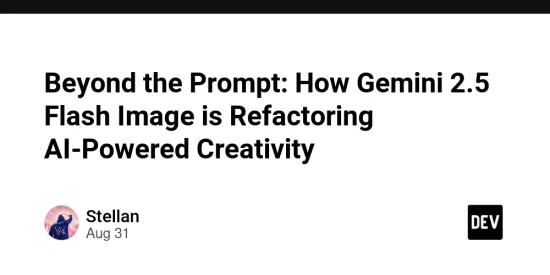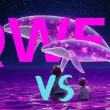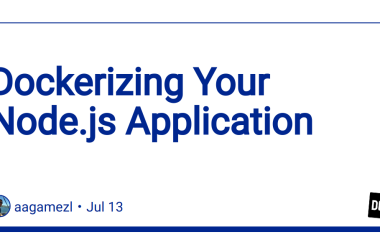If you’ve worked with AI image generators, you know the drill: write a prompt, get an image, and if it’s not quite right, you start over with a re-engineered prompt. It’s a stateless, transactional process. Google’s Gemini 2.5 Flash Image is set to change that entire workflow. This isn’t just an incremental model update; it’s a fundamental shift towards a more interactive and stateful approach to visual creation.
This technology has moved past the experimental stage and is now a robust tool for producing professional-grade visuals. For developers, designers, and creators, understanding its core mechanics is key to leveraging its power.
The Core Upgrade: From Stateless Prompts to Conversational Editing
The biggest limitation of previous-generation models was their one-and-done nature. You sent a request and got a response, with little room for intuitive iteration. Gemini 2.5 Flash Image replaces this with a fluid, conversational process. Its natively multimodal architecture allows it to understand a mix of text, reference images, and stylistic notes, creating a near-human level of context.
This leap forward introduces several key features that solve major pain points in AI-driven design.
1. Solving the Consistency Problem
Anyone who has tried to create a character for a webcomic or a consistent mascot for a brand with AI has felt the pain of inconsistency. A character’s features would drift from one generation to the next, making narrative or brand cohesion impossible.
Gemini 2.5 Flash Image addresses this directly by maintaining strong character and style consistency across multiple images. This is a game-changer for practical applications:
- Brand Assets: Generate a brand mascot or product style across countless marketing scenarios, from social media posts to UI elements, all with a consistent visual identity.
- Sequential Art: Storyboard artists and illustrators can develop characters and settings that remain stable through an entire sequence, perfect for comics, animation pre-production, or tutorials.
- Product Design: Rapidly prototype a physical product from different angles or in various environments while ensuring its core design remains unchanged.
2. The New Workflow: Iteration via Conversation
Perhaps the most significant practical innovation is the ability to edit images with natural language commands. This dramatically lowers the technical barrier, moving the process away from specialized software and complex prompt engineering and towards a simple dialogue.
For example, after generating a scene of a futuristic city, you can now iterate directly:
- “Make it nighttime and add reflections from the neon signs on the wet streets.”
- “Clear the foreground by removing that large vehicle on the left.”
- “Change the main character’s jacket to a darker blue with silver trim.”
This iterative loop mirrors the natural collaboration between a lead designer and a junior artist, making the tool more accessible and the creative process far more efficient. It gives you the fine-grained control needed to take a raw generation to a polished final asset.
3. Intelligent Composition: More Than Just Cut-and-Paste
Gemini 2.5 Flash Image also introduces a sophisticated form of creative synthesis. It can analyze multiple source images and intelligently blend their core concepts and aesthetics into a single, coherent output. This isn’t a simple photoshop collage; the model understands and fuses elements like lighting, perspective, and texture to create a seamless final image.
This capability is a powerful tool for ideation and conceptual design. A UI designer could blend a screenshot of an app with a photo of a natural texture to create a new design theme. A marketer could merge a product shot with a lifestyle image to produce a compelling ad concept in seconds.
Lowering the Barrier to High-Quality Visuals
For a long time, creating bespoke, high-quality visual content required significant budgets and specialized skills. Gemini 2.5 Flash Image helps level the playing field.
Startups and indie developers can now produce professional marketing assets without a dedicated design team. Solo content creators can generate stunning visuals for their blogs and videos, allowing them to compete on quality. This shift empowers smaller teams and individuals to execute their vision at a level that was previously out of reach.
Getting Access and Hands-On Experience
Powerful tools are only useful if they’re accessible. While Google provides enterprise-level access via its cloud platforms, an ecosystem of web-based services is bringing this technology to a wider audience. For anyone looking to get hands-on, the gemini 2.5 flash image platform offers a direct way to interact with the model’s capabilities. The rise of these platforms is crucial for ensuring all creators can experiment with these new tools.
The Evolving Role of the Creative Developer
The emergence of powerful generative AI doesn’t make creative roles obsolete; it evolves them. A creative professional’s value shifts from pure technical execution to high-level vision, taste, and direction. The required skillset is changing from being a master of a specific tool (like Photoshop) to being a master of concepts who can effectively direct an AI partner.
The designer becomes an art director, guiding the AI to generate foundational assets before curating and refining them. The marketer can rapidly prototype entire visual campaigns, A/B testing dozens of concepts in the time it used to take to brief a single one.
In short, Gemini 2.5 Flash Image isn’t just a better image generator. It’s a catalyst for a new creative paradigm, breaking down technical barriers and offering a powerful new canvas for our ideas. The conversation between human and machine is getting more sophisticated, and the visual language of the future is being built, one iteration at a time.






